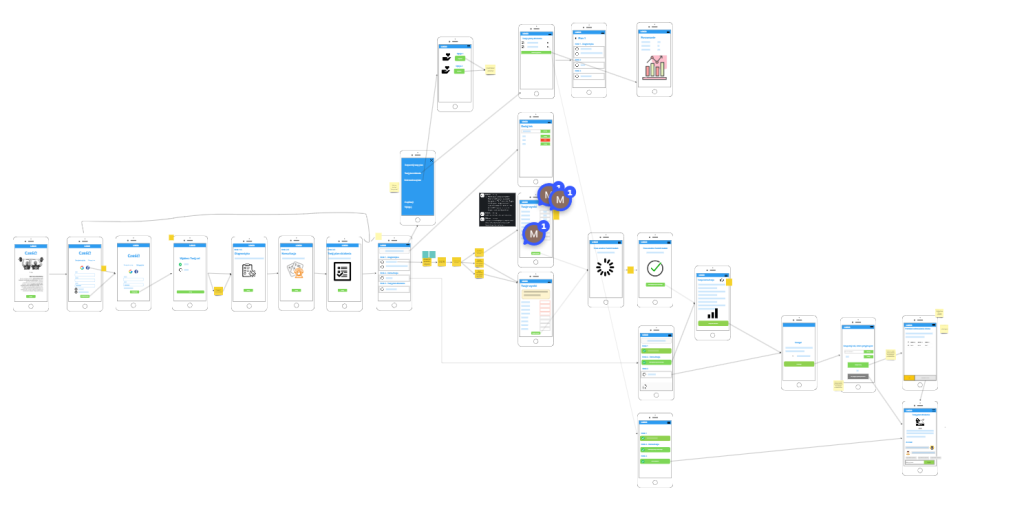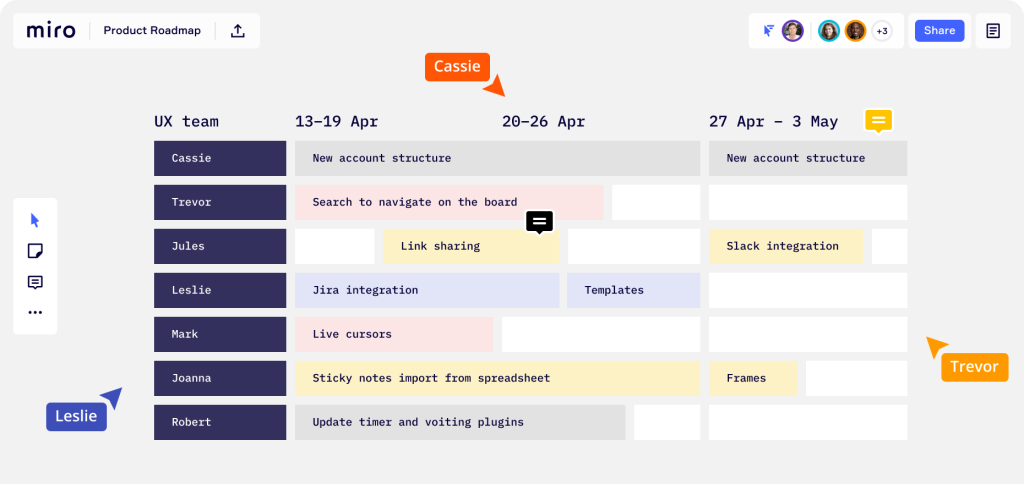The Role of Product Roadmaps in Renewable Energy Development
In the fast-paced manufacturing and renewable energy sectors, strategic planning is crucial. This is where product roadmaps become vital. They're not just plans, but visions aligning with industry shifts, ensuring products meet market needs.Launching a product goes beyond creating prototypes and user testing. Success hinges on a detailed plan that spans market introduction to sustained presence. A product roadmap is key. It's a strategic guide for your digital product's future direction and an essential tool in software development management. This blog post will discuss why a product roadmap is critical in your product design workshop, especially in dynamic industries like manufacturing and renewable energy.
Table of content
Table of Contents
We’re on board to help with your product. Don’t hesitate to get in touch.
Contact Us Let’sTalk
In the fast-paced manufacturing and renewable energy sectors, strategic planning is crucial. This is where product roadmaps become vital. They’re not just plans, but visions aligning with industry shifts, ensuring products meet market needs.Launching a product goes beyond creating prototypes and user testing. Success hinges on a detailed plan that spans market introduction to sustained presence. A product roadmap is key. It’s a strategic guide for your digital product’s future direction and an essential tool in software development management. This blog post will discuss why a product roadmap is critical in your product design workshop, especially in dynamic industries like manufacturing and renewable energy.
Understanding the Importance of Roadmaps in Manufacturing and Renewable Energy
A roadmap serves several key functions. First, it provides clarity and direction, ensuring that your team is aligned with the product’s goals and the pathway to achieving them. This is particularly important in industries like manufacturing and renewable energy, where rapid technological advancements and shifting market demands require a focused approach. Second, it acts as a guiding tool for critical decisions during the product development process. By emphasizing core functionalities that offer the most significant impact to users, a roadmap helps maintain a strategic focus amidst the complexities of product development.
Furthermore, a roadmap is a safeguard against over-diversification in product features. It steers the team’s efforts towards functionalities that not only meet user needs but also have a strong potential for market success. This focused approach is essential in dynamic sectors where prioritizing resources effectively can make the difference between success and failure.

Why You Need a Roadmap in a Product Design Workshop
In industries like manufacturing and renewable energy, a product roadmap is not just a strategic document but a crucial tool that outlines your digital product’s future direction. It plays a pivotal role in managing the development process of new software projects in these sectors. A roadmap is essential because it keeps you and your team focused and on track amid the complexities of these dynamic industries. It enables you to identify and prioritize critical tasks at each stage of the product development process, ensuring alignment with industry-specific needs and trends. With a roadmap, your attention remains on tasks that have the most significant impact, steering clear of distractions or diversions. This focused approach is especially important in the fast-evolving manufacturing and renewable energy sectors, where staying on course with the most relevant and impactful tasks is key to success.
Define Your Product Vision
The first step in creating your roadmap in the manufacturing and renewable energy industries is to define your product vision. This vision is a succinct, one-sentence description of your product’s purpose, tailored to these specific sectors. It should be clear, concise, and focused, reflecting the unique demands and opportunities in these fields. Your product vision serves as a guiding beacon for prioritizing different features and functionalities. It’s a tool to discern essential features from non-essential ones and to pinpoint those that will most significantly impact your users in these industries. In the complex landscape of manufacturing and renewable energy, where innovation and efficiency are paramount, your product vision lays the groundwork for developing a roadmap that aligns with industry-specific goals and user needs.
Define Your Product’s Key Success Factors
After defining your product vision in the context of the manufacturing and renewable energy sectors, the next step is to identify the key factors that will drive your product’s success. These key success factors should focus on what makes your product distinct and competitive, such as innovative features, appropriate pricing, strong branding, user-friendliness, excellent service, and other aspects critical to these industries.
In manufacturing and renewable energy, these factors might include cutting-edge technology, sustainability, compliance with industry standards, and energy efficiency. They are instrumental in differentiating your product from others in the market. Clearly defining these success factors is a crucial step in refining the direction of your product roadmap. By understanding and articulating how each of these factors contributes to the overall success of your product, you can ensure that your roadmap is not only a planning document but a strategic guide that aligns with the specific challenges and opportunities in the manufacturing and renewable energy sectors.
Define the User Experience – Or User Journey
Next step is to define the user experience, also known as the user journey. This user journey maps out the ideal experience for every user interacting with your product, tailored to these specific industries. This journey should detail how users will navigate through various stages of their interaction with your product, from initial discovery to regular use. In the context of manufacturing and renewable energy, this could involve stages like initial engagement, learning curve, regular usage, and feedback or support processes.

Understanding the user journey is crucial for identifying the necessary functionalities to be integrated into your product. It helps in determining which features will deliver the most value to your users, considering the unique needs and challenges of the manufacturing and renewable energy sectors. Just like your product’s key success factors, the user journey is instrumental in constructing your product roadmap. It ensures that the roadmap is not only a strategic plan but also a user-centric guide that aligns with the specific requirements and expectations of users in these industries.
Decide on Which Functionality to Build First
After establishing your product vision, identifying the key success factors, and mapping out the user journey for your product in the manufacturing and renewable energy sectors, the next phase involves prioritizing functionalities. Begin with those functionalities that will most significantly impact your users and are closely aligned with your product’s key success factors. For instance, if ease of use is a critical success factor in these industries, prioritize functionalities that allow users to quickly and efficiently engage with your product. This approach is particularly important in manufacturing and renewable energy, where user engagement can be influenced by factors such as technological complexity, safety standards, and environmental considerations.
Your roadmap serves as a strategic guide in this process, dictating the sequence of development. It ensures that the functionalities developed first are those that will not only deliver the greatest value to your users but also reinforce the core objectives of your product. This prioritization is essential in ensuring that your product meets the specific demands and challenges of the manufacturing and renewable energy sectors, ultimately leading to a more successful and user-aligned product.
Future Trends and Adaptations in Renewable Energy Roadmapping
In the production-service industry, particularly in sectors like manufacturing and renewable energy, the implementation of product roadmaps is fundamental for enhancing service delivery quality and operational efficiency. These roadmaps serve as a strategic framework, aligning product development with evolving industry requirements, ensuring that services and products remain both innovative and relevant. A key advantage of utilizing product roadmaps in this industry is the significant improvement in service delivery quality. Roadmaps provide a clear trajectory for product development, incorporating user feedback and adapting to shifts in technology and market dynamics. This ensures that services are not only customer-focused but also maintain high efficiency, leading to increased user satisfaction.
Operational efficiency also sees a marked improvement with the use of product roadmaps. By effectively prioritizing essential features and functionalities, these roadmaps facilitate better resource allocation, reduce the time required to market products, and prevent expensive developmental sidetracks. This streamlined approach is crucial for saving both time and resources, enhancing overall operational performance. The integration of strategic planning with product roadmap development is crucial for enduring success in the production-service industry. This integration ensures that the roadmap aligns with wider business objectives, providing a detailed and actionable route to achieving these goals.


